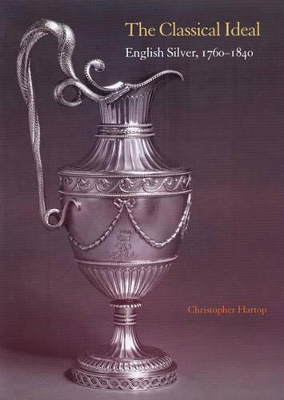
The second half of the eighteenth century saw an enthusiastic revival of the use of shapes and decoration from Greek and Roman architecture in the design of furniture, ceramics and silver. A reaction against the curving outlines and elaborate floral decoration of the rococo, neo-classicism was promoted as a return to the ideal proportions and balance of the ancient world. Ironically, however, it was also an evocation of lost civilizations and sowed the seeds of the romanticism of the succeeding century. The chief proponents of this new style were members of the emerging profession of architecture such as Sir William Chambers (1723-1796), architect to King George III, James Wyatt (1746-1813), James "Athenian" Stuart (1713-1788) and especially Robert Adam (1728-1792). All of them designed silver as well, and their contribution to the elegant forms and simple decoration of domestic silver of the period is assessed in this book, the first to be devoted to English neo-classical silver for over forty years. The part played by industrialization in the development of the style is also examined, as is the increasingly important role of opulent retailers such as Wakelin & Tayler, Thomas Heming, Joseph Creswell, Jeffries & Jones, and Rundell, Bridge & Rundell. At the beginning of the nineteenth century, Rundell's, with their own design studios and workshops staffed by such well-known names as Digby Scott (c. 1750-1816), Benjamin Smith (1764-after 1818) and Paul Storr (1771-1844), were at the forefront of the adoption of a new imperial style based no longer on classical architecture but on classical sculpture. This book will be a welcome addition to the bookshelf of the silver collector. It will also appeal to anyone interested in the history of design of the period.
| ISBN: | 9780952432296 |
| Publication date: | 3rd June 2010 |
| Author: | Christopher Hartop |
| Publisher: | John Adamson an imprint of John Adamson Publishing Consultants |
| Format: | Paperback |
| Pagination: | 80 pages |
| Genres: |
History of art Antiques, vintage and collectables: gold, silver and other metals (other than jewellery) |